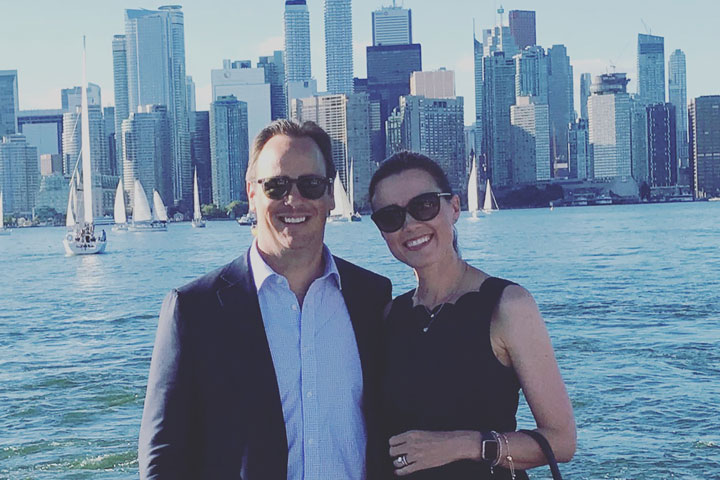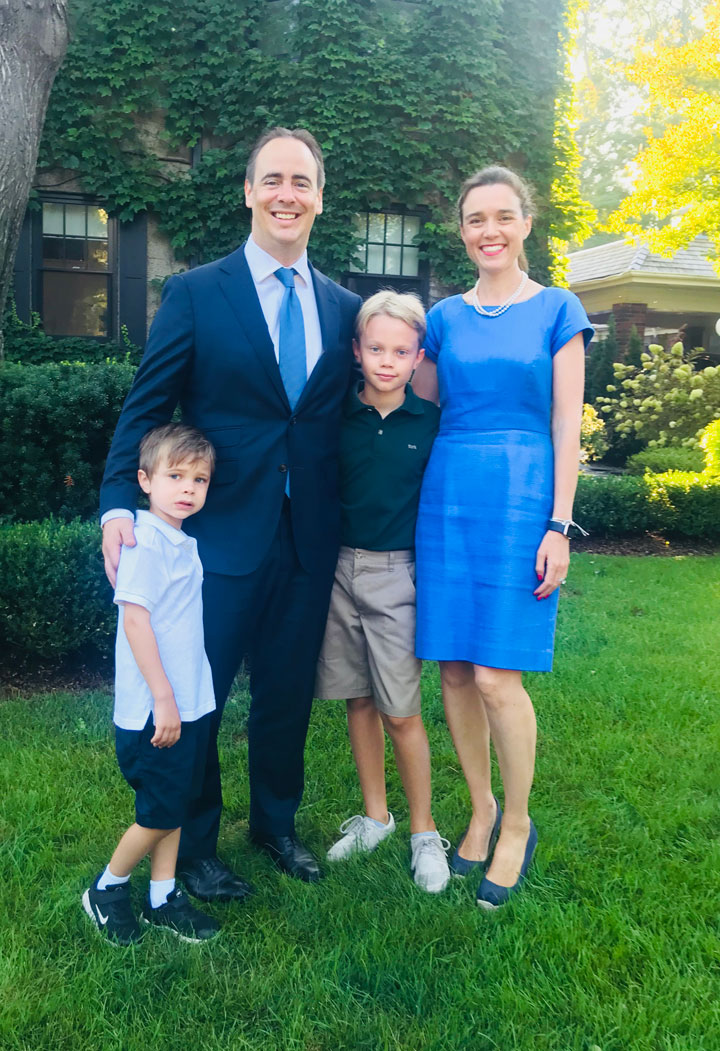Wendy Thomas was just days from turning 40 when she found out she probably had breast cancer.

A few weeks before her birthday, she had felt a “buzzing” in her right breast that led her to ask her doctor for tests.
Those tests revealed problems – a “sprinkling” of spots across her left, not her right, breast. “It looked like pencil shavings,” said Thomas. A biopsy on Feb. 2, 2018, a few days later, confirmed it was cancer. She feels lucky that it was spotted so early.
After a lumpectomy, her doctors presented her with two options: either another, more invasive surgery that would cut out a lot of tissue, or do a mastectomy to remove her breast tissue altogether.
She opted for the latter with one addition – she wanted reconstruction too.
“I needed to feel like a woman. I wanted to have breasts to feel that way. It was very important to me.”
Breast reconstruction is relatively rare in Canada compared to other countries, even though it’s covered by provincial health insurance. Here, only about 16 per cent of women have immediate breast reconstruction following a mastectomy, compared to about 38 per cent in the U.S., according to the Canadian Cancer Society – though those statistics don’t include women who may choose to have reconstruction months or years after their mastectomy.
But the number is growing, said Dr. Toni Zhong, Thomas’ surgeon and the Belinda Stronach chair in breast cancer reconstruction at the University Health Network in Toronto.
Partly, she said, that’s because people are becoming more aware of how it can help. “We now know that you don’t have to live with a mastectomy defect for the rest of your life and there are options available that can restore your breast to make you feel and look good or certainly better.”
“I think people are starting to realize it’s a large part of their recovery process.”
Building a breast
The new breast is generally built in one of two ways: either using an implant like the one used in breast augmentation, or a new breast is constructed from the patient’s own tissue, often from the abdomen.
WATCH: 1 in 9 women will face breast cancer at some point in their lives. And nearly half of those will need a mastectomy. Breast reconstruction is an option, but very few women actually go down this path. (From Oct. 2013)
“Most of our patients are patients over 50 that are having breast cancer, so by then, they have a little excess in their abdomen. So we remove the skin and fat excess in their abdomen and then we transfer that to the breast,” said Zhong.

Get weekly health news
The tissue is put into the patient’s hollowed-out breast, connected to blood vessels and shaped to resemble the other breast. In later procedures, if the nipple was removed during the mastectomy, surgeons can create a new one and tattoo on an areola to match the other side.
About half of the time, the first reconstruction procedure is done during the same operation as the mastectomy, said Zhong, so the patient wakes up with the beginnings of a new breast. Other patients for medical or other reasons might come back months or years later to start the reconstruction.
Thomas’ breast will be remade using an implant. Right now, she has a tissue expander put in, which will slowly stretch out her skin over months to accommodate the implant. She thinks she will have that procedure in about three months.
She’s pleased with the results so far.
“The shape is great. The size is great. It’s a little uncomfortable because it’s an expander and it feels like lying on a piece of brick. It’s going to be a lot easier when they’re out.”
The decision to build
Thomas felt that her breasts were essential to feeling like a woman, though she acknowledges that many other women wouldn’t feel the same way.
“It’s a part of your body that you feel this emotional attachment to when you get confronted with potentially losing them.”
“You don’t even think about them too much, but when you get actually put in this situation, I just felt this feeling of attachment and I didn’t want to look any different, feel any less of a woman.”
She was anxious about the procedure and the potential loss to her self-concept going in, but, “I felt great when I came out of it. I’d like to be there for other women who had the same type of anxiety that I did to let them know that it’s not a bad thing and you come out and you will still feel like a woman.”
According to Zhong, research shows that women who have a breast reconstruction following a mastectomy report a higher quality of life and well-being than those who don’t.
Having a big scar on your chest or using a prosthetic can be both a reminder of your cancer and a hindrance to normal daily activities like swimming, she said.
And the results have gotten a lot better over the years. “I have patients that go to the gym and get changed, and people that see them all the time in the gym don’t even know that they have had a reconstruction.”
It’s a surgery and still comes with risks, she said. “My patients know, no matter how hard we try and I tell them, we can never replace the breast that they lost. We’ll never be able to completely match the other side.”
But Zhong feels lucky that she’s able to offer patients good news – a rarity in a cancer hospital where she says patients always say that doctors are taking things away. “Taking away their breast. They may lose their hair. They may lose their eyebrows. They may lose their appetite. Even skin after radiation.”
“Then they come and see me and I say, ‘Well, we actually have the ability to give you something back. To give you hope, to restore this and give you a sense of normalcy again.’”
Nobody blinks at offering a person who’s suffered a facial trauma reconstructive surgery, she said, and she’s happy that women who have suffered breast cancer are also given this option.
Thomas thinks she’s lucky to have had the procedure. “This was like a positive light at the end of the tunnel. I can still look and feel the same. I don’t have to feel any different than I felt last year when I didn’t have cancer.”
“Yes, I have a scar on me, a pretty extensive scar. But I’m not bothered by that at all. It’s almost like a war wound for all that I went through and a reminder to me that I need to take advantage of every single day.”





Comments